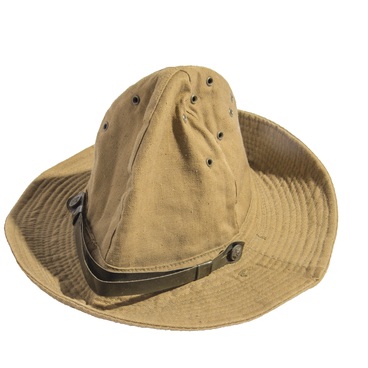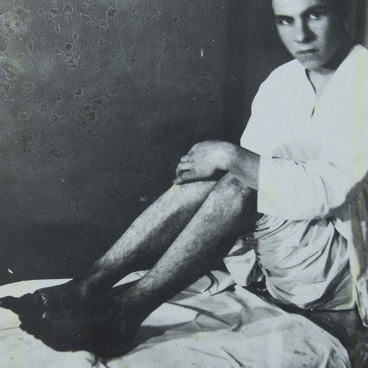The first chemical heating pads were introduced during World War I in the English and American armies. These heating pads did not need to be filled with hot water or to be connected to a power source, and it was their major advantage over the usual heating pads. Warming up of a pad was triggered by internal catalysis — accelerating chemical reaction.
In the USSR, the development of chemical heating pads began in the 1930s. Through the efforts of several scientific institutes, the heating pad was improved and in a very short time brought into mass production. These heating pads became especially popular during the Soviet-Finnish War of 1939–1940. The heat packs saved the lives of many soldiers and officers.
Soviet chemical heating pads were made from two layers of tarpaulin — a dense, durable fabric soaked in a water-repellent compound. A special chemical composition was put between the layers — calcium oxide, also known as quicklime, was most commonly used. The finished heating pad was packaged in a square paper bag with the instructions typographically printed on the package.
The chemical heating pad was easy to use. An orderly cut open the paper package and tarpaulin, added 50 milliliters (2–3 tablespoons) of water inside, and shook the bag vigorously for several minutes to trigger an exothermic reaction. The heating pad gave off heat for 2–3 hours, and afterward one spoonful of water was poured into it, thereby triggering the reaction once more. The heating pad could be ‘restarted’ up to 10–12 times, so it was enough for a day of continuous use.
For the period from 1942 to 1944, the Moscow Chemical Plant named after Pyotr Voikov produced seven million heating pads annually for the needs of the battle front. They were used to keep the serving soldiers warm, orderlies and porters used them to protect the wounded from the cold during the evacuation. Heating pads were carried by snipers, scouts and partisans on missions. They were also used by the civilian population in everyday life.
The heating pad from the collection of the Military Medical Museum was manufactured by the Chemical Plant No. 1 in Moscow in 1937. The exhibit entered the museum in December 1944: it was brought from the Karelian front — the northernmost and longest front of World War II.
In the USSR, the development of chemical heating pads began in the 1930s. Through the efforts of several scientific institutes, the heating pad was improved and in a very short time brought into mass production. These heating pads became especially popular during the Soviet-Finnish War of 1939–1940. The heat packs saved the lives of many soldiers and officers.
Soviet chemical heating pads were made from two layers of tarpaulin — a dense, durable fabric soaked in a water-repellent compound. A special chemical composition was put between the layers — calcium oxide, also known as quicklime, was most commonly used. The finished heating pad was packaged in a square paper bag with the instructions typographically printed on the package.
The chemical heating pad was easy to use. An orderly cut open the paper package and tarpaulin, added 50 milliliters (2–3 tablespoons) of water inside, and shook the bag vigorously for several minutes to trigger an exothermic reaction. The heating pad gave off heat for 2–3 hours, and afterward one spoonful of water was poured into it, thereby triggering the reaction once more. The heating pad could be ‘restarted’ up to 10–12 times, so it was enough for a day of continuous use.
For the period from 1942 to 1944, the Moscow Chemical Plant named after Pyotr Voikov produced seven million heating pads annually for the needs of the battle front. They were used to keep the serving soldiers warm, orderlies and porters used them to protect the wounded from the cold during the evacuation. Heating pads were carried by snipers, scouts and partisans on missions. They were also used by the civilian population in everyday life.
The heating pad from the collection of the Military Medical Museum was manufactured by the Chemical Plant No. 1 in Moscow in 1937. The exhibit entered the museum in December 1944: it was brought from the Karelian front — the northernmost and longest front of World War II.



